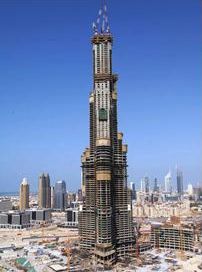 Senai is 45 minutes away from Singapore and an hour away from Pasir Gudang.Photos by Leong Chan Teik
Senai is 45 minutes away from Singapore and an hour away from Pasir Gudang.Photos by Leong Chan Teik
IT WAS almost in no time that we arrived in Senai by car.
We were lucky recently to be chauffeured on the 45-minute drive via the Second Link. And we had a friendly guide in Kelly Ng, the CFO of Design Studio.
We had asked to visit her company’s manufacturing plant in the industrial estate of Senai, a thriving hub in Johor which houses plants of many Singapore companies.
There, Design Studio manufactures doors, kitchen cabinets and wardrobes for various property projects in various parts of the world.
 First step: Raw board is cut into wood panels of various sizes
First step: Raw board is cut into wood panels of various sizes
Right now, it is busy producing for projects such as:
* the Capella Singapore (a luxury resort on Sentosa Island),
* Ritz Carlton (Dubai),
* Sathorn (Thailand), and
* RiverGate Condominium in Singapore.
The biggest project for Design Studio is the Burj in Dubai, the world’s tallest building.
Design Studio’s contract there is worth S$19.8 million for the supply of entrance doors and frames and kitchen cabinets.
 The cut-to-size wood panels are ready to be turned into kitchen cabinets, or doors, or wardrobes.
The cut-to-size wood panels are ready to be turned into kitchen cabinets, or doors, or wardrobes.
In Senai, it operates two leased factories which are located side by side and occupy a total of 160,000 sq ft of land.
About 160 workers are on the day shift lasting 12 hours, while about 40 workers on the night shift focus on ‘bottlenecks’ in the production process - that is, the type of work that requires more man hours.
Step by step
For us to understand the manufacturing process, S.H. Mak, production controller, joined Kelly in taking us on a tour of the plants.
 A door in the making
A door in the making
The starting point was where three machines cut raw boards bought from Malaysia, Indonesia and China into panels of various sizes. About 1,000 panels are produced during a day shift, and they are the building blocks for the final products.
The plant capacity is 1,200 panels for a day shift. If the order book swells a lot more, the panel cutting can be extended to the night shift too. Going by that, it can be said that Design Studio operates at roughly half of its full capacity.
Kelly and Mak explained that the factories produce for several projects at a time.
 Honeycomb paper in-filling is inserted into the door.
Honeycomb paper in-filling is inserted into the door.
Production schedules have to be managed and adjusted to be in tune with the progress of clients’ projects.
“Ours is a just-in-time system,” says Mak. “We can produce today and transport out tomorrow.”
In the making of doors, Design Studio uses honeycomb paper in-filling from Netherlands. The in-filling is a substitute for wood, resulting in 30-35% cost savings.
The weight of a 1 m x 2 m door with honeycomb in-filling is 25 kg, or half that of doors with solid wood cores.
 Destination: Sathorn Heritage, Thailand. Products are bar-coded and labelled before they are delivered.
Destination: Sathorn Heritage, Thailand. Products are bar-coded and labelled before they are delivered.
At the tail-end of our factory tour we came to a clean room where the final coating is applied on furniture with glossy finishing or on certain types of surfaces.
Outside of a clean room, dust particles could settle on the finishing and may, unfortunately, be visible on the finished product.
Because they cost a few hundred thousand dollars to build, clean rooms are found only in high-end furniture makers.
Talking about clean rooms, one would not fail to notice the high level of maintenance of the factories.
Mak acknowledged that with a touch of pride: “I have visitors say: ‘Wow, you have the cleanest furniture factory I have ever seen.’ ”
Visitors regularly include clients and prospective clients who want to check out the factories.
On why Senai continues to be where Design Studio’s plants are located instead of China, Kelly said the company customizes its products for clients, which requires a higher level of supervision by Singapore management than would an operation that produces mass furniture.
Senai is a choice location for another reason: Design Studio’s furniture can be conveniently transported to Pasir Gudang in about an hour.
From there, sea feeder services move the furniture to mother vessels waiting at Singapore ports.When the work is done, you can also head to unpretentious restaurants in Senai town for a delicious meal. Try the local version of roast duck and, if the season is right, the local durian. A round of golf can be had too, in a nearby luxury hotel.
| Design Studio | 2005 | 2006 | 2007 |
Turnover $ |
38.2 m | 59.7 m | 76.4 m |
| EPS (cents) | -1.41 | 2.65 | 4.03 |
Recent NextInsight stories:
DESIGN STUDIO: Designs for the big time
DESIGN STUDIO: B2B furniture maker aims for even better margins







